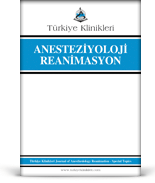Objective: The effectiveness of placing patients in a 15° left-lateral tilt position (LLTP) during the surgical preparation to prevent hypotension after spinal anesthesia in cesarean surgeries is discussed today, and it has not been elucidated whether it is beneficial or not. In recent years, it has been considered that more effective results can be obtained with the 30° LLTP for the patients during surgical preparation. The purpose of the present study was to compare whether there is a difference between maternal effects of supine, 15° left tilt, and 30° left tilt positions. Material and Methods: Women who underwent elective cesarean delivery under spinal anesthesia were randomized to the supine position (SP), 15° LLTP, or 30° LLTP groups. The position was changed to supine before the incision and 10 mL/kg of isotonic fluid was initiated in the patients. Hypotension [systolic blood pressure (SBP) reduction >20% baseline or SBP<90 mmHg] was treated with intravenous bolus ephedrine based on maternal heart rate. The incidence of hypotension and bradycardia until the end of surgery, as well as the time to first ephedrine use and the total amount of ephedrine administered, were investigated. Results: Time of first ephedrine HCl use was earlier in the SP group compared to the 30° left tilt position group (3 vs. 6 minutes, p=0.002). The total dose of ephedrine HCl was significantly lower in the SP group than in the 30° left tilt position group (p<0.001). Conclusion: Hypotension development can be averted in term pregnant women when they stay in the 30° LLTP after spinal anesthesia.
Keywords: Cesarean section; spinal anesthesia; tilt position
Amaç: Sezaryen ameliyatlarında spinal anestezi sonrası hipotansiyonu önlemek için cerrahi hazırlık sırasında hastaların 15° sola tilt pozisyonunda yerleştirilmesinin etkinliği günümüzde tartışılmakta olup, faydalı olup olmadığı henüz aydınlatılamamıştır. Son yıllarda hastalara cerrahi hazırlık sırasında 30° sola tilt pozisyonu verilmesiyle daha etkili sonuçlar alınabileceği düşünülmektedir. Bu çalışmanın amacı, sırtüstü 15° sola eğim ve 30° sola eğim pozisyonlarının anneye etkileri arasında fark olup olmadığını karşılaştırmaktır. Gereç ve Yöntemler: Spinal anestezi altında elektif sezaryen doğum yapılan kadınlar sırtüstü pozisyon, 15° sol-lateral tilt pozisyonu veya 30° sol-lateral tilt pozisyonu gruplarına randomize edildi. Kesi öncesi pozisyon supin pozisyona getirilerek hastalara 10 mL/kg izotonik sıvı başlandı. Hipotansiyon (sistolik kan basıncında başlangıca göre >%20 azalma veya <90 mm Hg), annenin kalp atış hızına göre intravenöz bolus efedrin ile tedavi edildi. Ameliyat sonuna kadar hipotansiyon ve bradikardi görülme sıklığı ile ilk efedrin kullanım zamanı ve toplam efedrin miktarı araştırıldı. Bulgular: Efedrin HCl'nin ilk kullanım zamanı sırtüstü pozisyon grubunda 30° sola tilt pozisyonuna göre daha erkendi (3'e karşı 6 dk, p=0,002). Toplam efedrin HCl dozu sırtüstü pozisyon grubunda 30° sola tilt pozisyonuna göre anlamlı derecede fazlaydı (p<0,001). Sonuç: Term gebelerde spinal anestezi sonrası 30° sola tilt pozisyonunda kalmaları durumunda hipotansiyon gelişmesi önlenebilir.
Anahtar Kelimeler: Sezaryen ameliyatı; spinal anestezi; tilt pozisyon
- Haynes AB, Regenbogen SE, Weiser TG, Lipsitz SR, Dziekan G, Berry WR, et al. Surgical outcome measurement for a global patient population: validation of the Surgical Apgar Score in 8 countries. Surgery. 2011;149(4):519-24. [Crossref] [PubMed]
- Gu WJ, Hou BL, Kwong JSW, Tian X, Qian Y, Cui Y, et al. Association between intraoperative hypotension and 30-day mortality, major adverse cardiac events, and acute kidney injury after non-cardiac surgery: A meta-analysis of cohort studies. Int J Cardiol. 2018;258:68-73. [Crossref] [PubMed]
- Heesen M, Stewart A, Fernando R. Vasopressors for the treatment of maternal hypotension following spinal anaesthesia for elective caesarean section: past, present and future. Anaesthesia. 2015;70(3):252-7. [Crossref] [PubMed]
- Howard BK, Goodson JH, Mengert WF. Supine hypotensive syndrome in late pregnancy. Obstet Gynecol. 1953;1(4):371-7. [PubMed]
- Kinsella SM, Lohmann G. Supine hypotensive syndrome. Obstet Gynecol. 1994;83(5 Pt 1):774-88. [PubMed]
- Rees GA, Willis BA. Resuscitation in late pregnancy. Anaesthesia. 1988;43(5):347-9. [Crossref] [PubMed]
- Kinsella SM. Lateral tilt for pregnant women: why 15 degrees? Anaesthesia. 2003;58(9):835-6. [Crossref] [PubMed]
- Ellington C, Katz VL, Watson WJ, Spielman FJ. The effect of lateral tilt on maternal and fetal hemodynamic variables. Obstet Gynecol. 1991;77(2):201-3. [Crossref] [PubMed]
- Bamber JH, Dresner M. Aortocaval compression in pregnancy: the effect of changing the degree and direction of lateral tilt on maternal cardiac output. Anesth Analg. 2003;97(1):256-8, table of contents. [Crossref] [PubMed]
- Calvache JA, Muñoz MF, Baron FJ. Hemodynamic effects of a right lumbar-pelvic wedge during spinal anesthesia for cesarean section. Int J Obstet Anesth. 2011;20(4):307-11. [Crossref] [PubMed]
- Liu T, Zou S, Guo L, Niu Z, Wang M, Xu C, et al. Effect of different positions during surgical preparation with combined spinal-epidural anesthesia for elective cesarean delivery: a randomized controlled trial. Anesth Analg. 2021;133(5):1235-43. [Crossref] [PubMed]
- You J, Li M, Fan W, Li T, Wang J. Effect of different position on inferior vena cava dimensions and its influence on hemodynamics during cesarean section under combined spinal-epidural anesthesia: A randomized controlled trial. J Obstet Gynaecol Res. 2022;48(12):3103-10. [Crossref] [PubMed] [PMC]
- Fujita N, Higuchi H, Sakuma S, Takagi S, Latif MAHM, Ozaki M. Effect of right-lateral versus left-lateral tilt position on compression of the inferior vena cava in pregnant women determined by magnetic resonance imaging. Anesth Analg. 2019;128(6):1217-22. [Crossref] [PubMed]
- Lee AJ, Landau R, Mattingly JL, Meenan MM, Corradini B, Wang S, et al. Left lateral table tilt for elective cesarean delivery under spinal anesthesia has no effect on neonatal acid-base status: a randomized controlled trial. Anesthesiology. 2017;127(2):241-9. [Crossref] [PubMed]







.: Process List